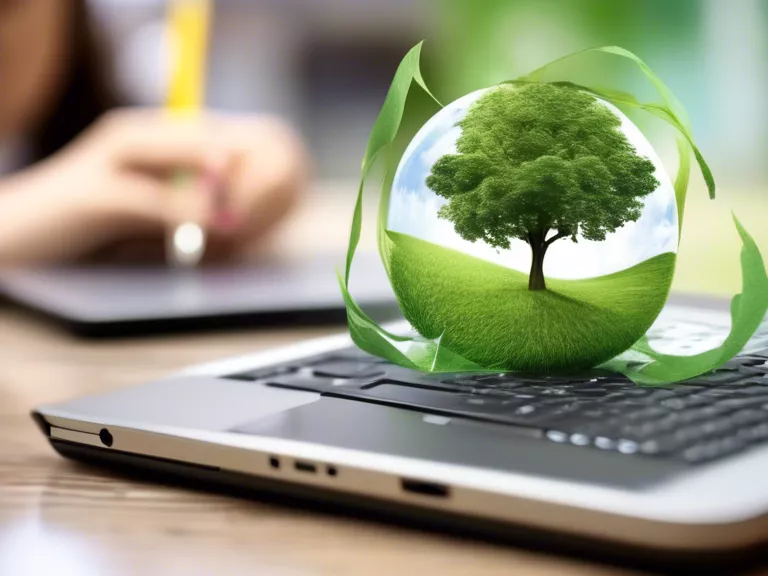
Introduction
Educational technology has revolutionized the way we learn and teach, offering innovative tools and platforms to enhance the educational experience. However, with the increasing focus on sustainability and environmental responsibility, it is crucial to incorporate sustainable practices in the development and use of educational technology. By adopting eco-friendly strategies, educational institutions and tech developers can contribute to a greener future while still delivering high-quality learning experiences.
Sustainable Design Principles
Energy Efficiency
One of the key aspects of sustainable educational technology is energy efficiency. Designing devices and platforms that consume less power can significantly reduce their carbon footprint. This can be achieved through optimizing hardware components, utilizing energy-saving features, and implementing efficient software algorithms.
Use of Recycled Materials
Another important sustainable practice is the use of recycled materials in the production of educational technology devices. By incorporating recycled plastics, metals, and other materials, manufacturers can reduce the demand for new resources and minimize waste generation.
Longevity and Durability
Creating durable and long-lasting educational technology products is essential for sustainability. Products that are built to last require fewer replacements, reducing overall resource consumption and e-waste generation. Additionally, designing devices that are easily repairable can further extend their lifespan.
Sustainable Development
Open-Source Platforms
Developing educational technology on open-source platforms promotes sustainability by allowing for collaborative and transparent development processes. Open-source software encourages innovation, customization, and knowledge sharing, leading to more sustainable solutions.
Cloud Computing
Utilizing cloud computing in educational technology can help reduce the environmental impact of data storage and processing. Cloud services offer scalable and efficient solutions that can lower energy consumption and hardware requirements, leading to a more sustainable infrastructure.
Virtual Learning Environments
Virtual learning environments, such as online courses and digital classrooms, provide eco-friendly alternatives to traditional education methods. By reducing the need for physical resources like paper and transportation, virtual learning can significantly lower carbon emissions and resource usage.
Sustainable Practices in Implementation
E-Waste Management
Proper e-waste management is crucial for sustainable educational technology practices. Institutions and users should prioritize recycling and responsible disposal of old devices to prevent environmental contamination and promote resource recovery.
Energy Management
Implementing energy-saving strategies in educational technology usage can help reduce carbon emissions and lower operating costs. Simple practices like turning off devices when not in use, optimizing power settings, and utilizing energy-efficient hardware can make a significant impact.
Sustainable Procurement
When acquiring new educational technology resources, institutions should prioritize products from sustainable and responsible manufacturers. Considering factors such as energy efficiency, recyclability, and ethical sourcing can help promote environmentally friendly practices in the industry.
Conclusion
By integrating sustainable practices in educational technology design, development, and implementation, we can create a more environmentally conscious learning environment. Embracing energy efficiency, recycled materials, open-source platforms, and responsible usage habits can lead to a greener future for education. As educators, students, and technology developers, we all have a role to play in advancing sustainability in educational technology for the benefit of present and future generations.

